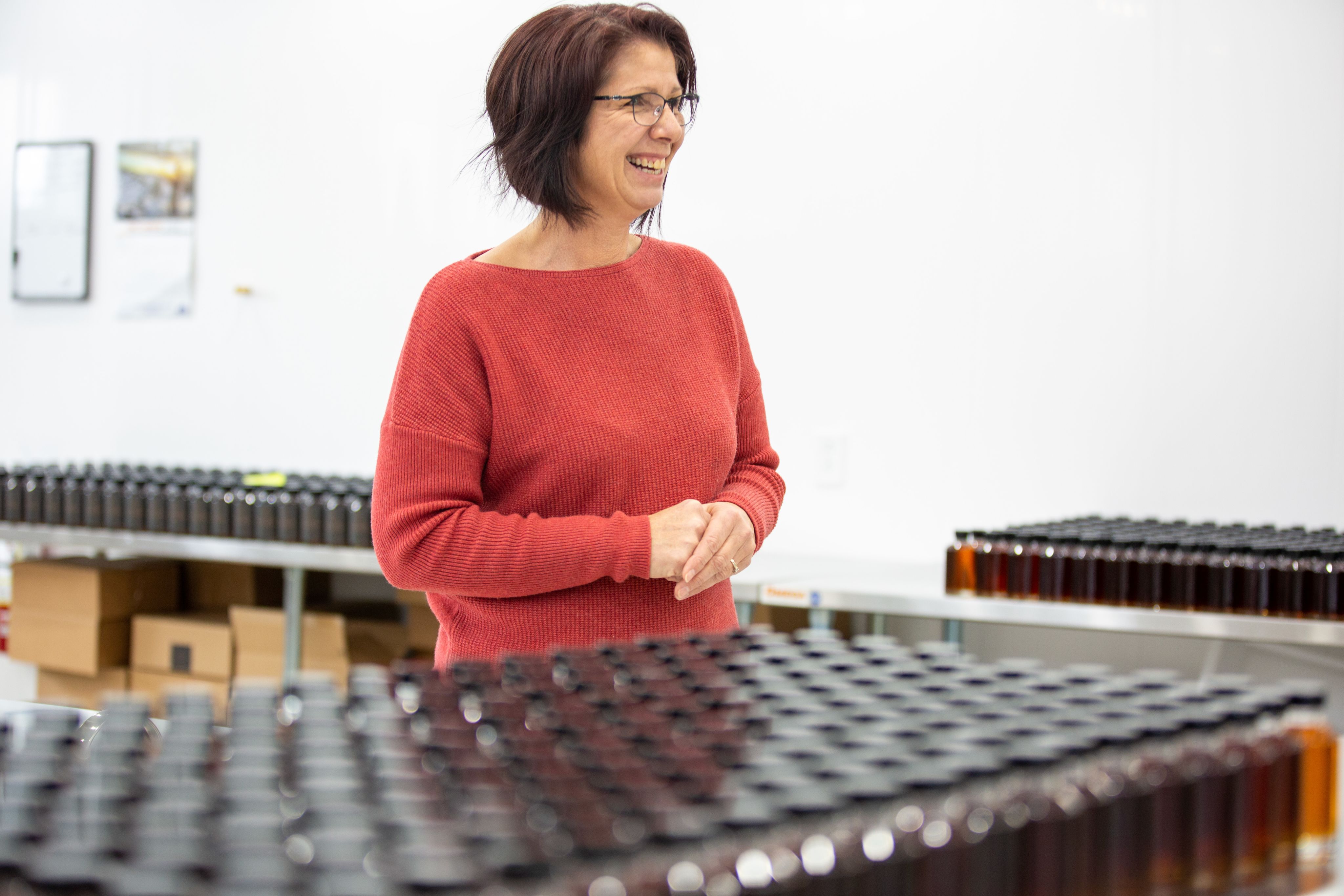Maple Moon Rising

As winter begins to give way to the first signs of warmth, Eastern Canada springs into sugaring season. Maple trees are tapped, and sap is collected and boiled down to the sweet amber-hued product that has become a symbol of Canada.
But while the sweet story of Canada's maple syrup unfolds each year, with Canada producing about 80% of the world's supply annually, one important aspect of the story often gets overlooked: the product's Indigenous roots.
"It's been a cherished tradition for our people and communities for centuries," says Jolene Johnson, President and CEO of Wabanaki Maple.
Built on Indigenous traditions of maple sap harvest, Wabanaki Maple puts an innovative twist on an ancient product, aging the syrup in bourbon, whiskey and toasted oak barrels to create a unique taste. The company's products also include a line of syrup infused with flavours such as Elderberry.

The company's name refers to the Wabanaki Confederacy, which consists of the Wolastoqiyik, Mi'kmaq, Penobscot, Abenaki and Passamaquoddy First Nations. It means People of the Dawn or People of the First Light.
"The first people to greet the sunrise," Jolene explains.
Jolene became interested in maple production decades ago thanks to her sister and brother-in-law, who operated a hobby sugar bush. Helping them with the harvest, Jolene felt a connection to nature and to her cultural heritage.
"I embraced these experiences and it was one of the driving forces behind my business."
Jolene's business is a unique blend of tradition, innovation and a sense of place. She sources her maple syrup from New Brunswick on the traditional lands of the Wabanaki.


Along with creating a high-end maple syrup product, Jolene also uses her business as an opportunity for education on the Indigenous roots of maple syrup production.
"Before the arrival of settlers, Indigenous people used a method called "tapping" to collect maple sap," Jolene says. "The process involved making small carvings of a 'V' in the tree trunk and then inserting a wooden or bone spout. The sap would then flow out of the spout and into a container such as a birch bark basket or a clay pot."
The sap would be collected daily and transported back to their villages for processing into maple syrup.
"The maple sap is full of nutrients, so it was often used to help replenish the body and provide energy to the body after long periods of being deprived of certain foods throughout the winter months," she adds.
Other traditional uses of maple sap (which are continued today), include using it in cooking as a sweetener or for adding flavour, treating various ailments such as coughs, colds and digestive issues.
"It was also used as a salve for healing skin conditions and minor wounds."

As her ancestors have for millennia, Jolene looks forward each year to the rise of the Maple Moon or Sugar Moon – that period of transition between the dark days of winter and the promise of spring. It signals a time when the sap begins to flow.
"During this time of year, Indigenous communities have various traditions and ceremonies that are significant to the Maple Moon or Sugar Moon," says Jolene.
Although specific Maple Moon traditions vary among different Indigenous cultures, they usually involve giving thanks and showing gratitude for the maple trees through ceremonies that can include offerings, prayers, songs and dances to honour the trees and the natural world.
"It is also a time for gathering and community celebrations," Jolene says. "As families and communities come together to collect sap, boil it down into syrup and share in the abundance of the maple harvest."
Watch the Wabanaki Maple story:
Embrace Canada with Landsby
Landsby creates unique and immersive experiences that not only provide travellers with purposeful and enriching trips but aim to positively impact the host communities.










